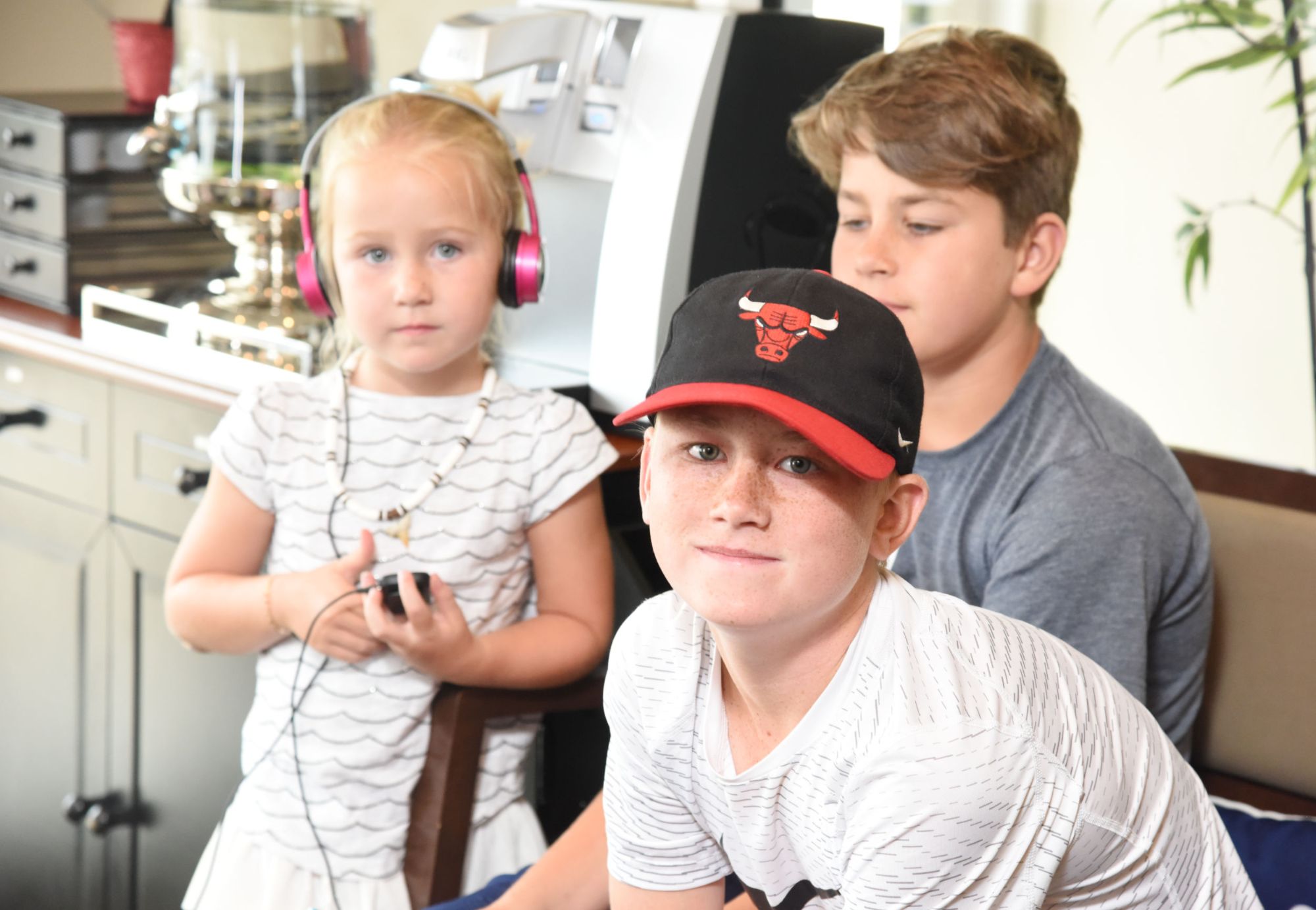When it comes to orthodontics, many people still tend to think of teens in metal braces before anything else, but the American Association of Orthodontists actually recommends that children have their first orthodontic evaluation by around the age of 7. Because most kids still have baby teeth and developing mouths at this age, you may wonder why they need to see an orthodontist so soon. Here at Advanced Orthodontics, we believe in the power of preventive care!
When your child has an exam with an experienced orthodontist at an early age, it means potential orthodontic issues can be caught sooner. This can often reduce the risk of them becoming much bigger problems later on in life, helping to prevent any negative impact on their future permanent teeth and bite.
We treat a number of young patients, so we’ve been able to observe firsthand how starting treatment at the right time can make a positive difference to a child’s overall oral health. If your child is ready for their first orthodontic appointment, we’d love to meet you both and take a look at their teeth! Keep reading below to learn more about some of the things we’ll be checking for during this initial evaluation.
Tooth loss and eruption
Baby teeth may fall out, but as placeholders for the permanent teeth, they’re still important. Where they’re located and when they are lost matters more than you might think! These primary teeth tend to fall out in a fairly specific order, so any significant deviation from this pattern could signify a developmental issue that needs attention.
At this age, most children will also have at least four permanent molars and up to four permanent incisors. If your child has more or less than this, it could indicate a problem with missing, crowding, or extra teeth. In some of these cases, we may choose to remove a primary tooth early. In others, we may want to maintain a space where a tooth has been lost prematurely in order to prevent bigger problems later on.
Crowding and spacing
Experienced orthodontists like Dr. Nielson and Dr. White are generally able to tell relatively early in your child’s life if they’re experiencing problems with excessive crowding or spacing of their teeth. They’ll also be able if such problems are likely to develop later on. Spacing issues can show up when a tooth is lost prematurely, where one has never developed, or with teeth that are too small or spaced apart. If crowding is an issue, it can often be corrected by expanding the arches or removing certain teeth.
Misalignment
Crooked teeth are more susceptible to uneven damage and wear. When left untreated over a long enough period of time, misalignment can compromise the surrounding gum tissue, affecting the shape and position of it. While we’re able to successfully align teeth at almost any age, getting a head start on this can help prevent some of that wear and tear in children, giving them the best start for a healthy smile!
Overbite (protrusive front teeth)
Aside from cosmetic concerns, front teeth that obviously protrude can cause pain in the jaw and may contribute to speech difficulties as well. We can’t always permanently correct an overbite until your child’s mouth has finished growing, but there are still a number of things we can do to help reduce the risk of pain, traumatic injury, and improve psychosocial concerns.
Underbite
Underbites can be caused by problems with either the teeth or jaws. The most difficult scenario involves the lower jaw growing too far forward. In a case like that, we’ll typically need to wait until the patient has finished growing to begin their treatment, around the age of 16 or so. Even if there’s a waiting period involved, early treatment is still important in order to avoid bite-shifting and damage to the front teeth. Underbite patients who receive early treatment between the ages of about 7-10 are less likely to need jaw surgery when they get older.
Posterior Crossbite
A posterior crossbite can lead to crowding, and may also cause the jaw to shift from one side to the other. Expanding the upper jaw in earlier childhood may allow us to reduce crowding and create space for the front teeth to come through uninterrupted. Expansion can also eliminate any shifting that may be present due to a constricted upper jaw.
Anterior Open Bites and Deep Bites
These are vertical bite problems. In bites that are too deep, the top teeth completely cover the bottom ones when biting, which can indicate a small lower jaw. In an open bite, the overall bite doesn’t overlap enough. This may be a sign that there is a finger, thumb, or tongue habit causing dental problems. If this is a problem, our team will be happy to work with you and your child to eliminate destructive habits early on. This will allow development to continue normally. Open and deep bites can usually be detected by the time your child is ready for their first orthodontic appointment.
Early evaluations equal healthier smiles at Advanced Orthodontics
As you can see, early orthodontic evaluations are an important part of giving your child a healthy smile! As children grow, the jaw bones begin to harden and will eventually stop growing. Any orthodontic procedures we perform after this point can take more time and be more invasive. This includes treatments such as tooth extraction or oral surgery.
Having your child examined, and possibly treated by, and orthodontist as a child can often help prevent the need for orthodontics as an adult. Preventive treatment like early evaluations can also make comprehensive orthodontic treatment faster and more efficient!
Here at Advanced Orthodontics, we make your child’s smile our top priority. We have a talented team who are committed to providing quality orthodontic care for patients of all ages in a friendly, stress-free environment. With two conveniently located offices in Centennial and Aurora, it’s easier than ever to take the first step towards a beautiful smile that will last a lifetime. If you’re ready to schedule your child’s first orthodontic appointment with us, get in touch today. We’d love to help you get started!


